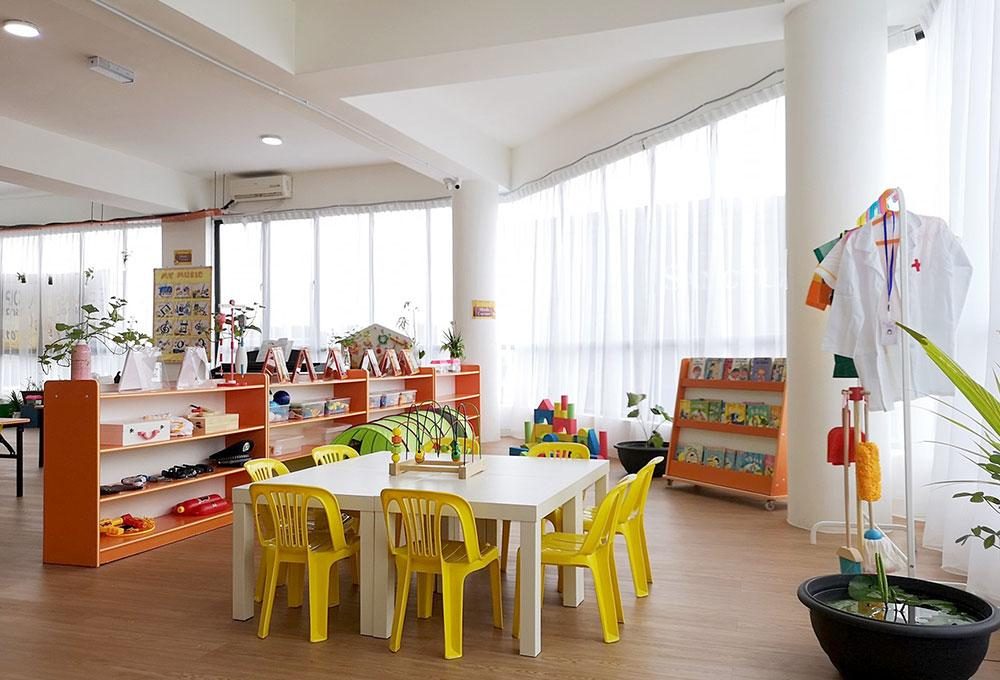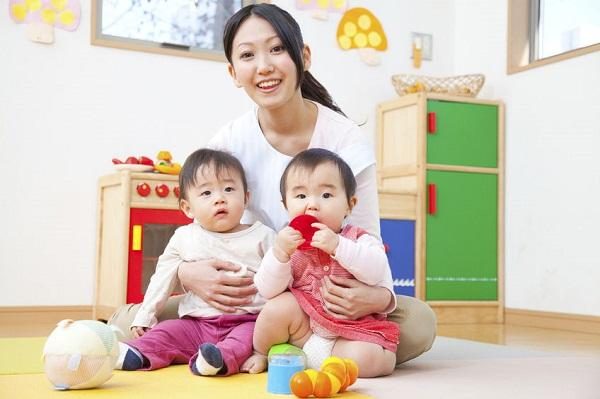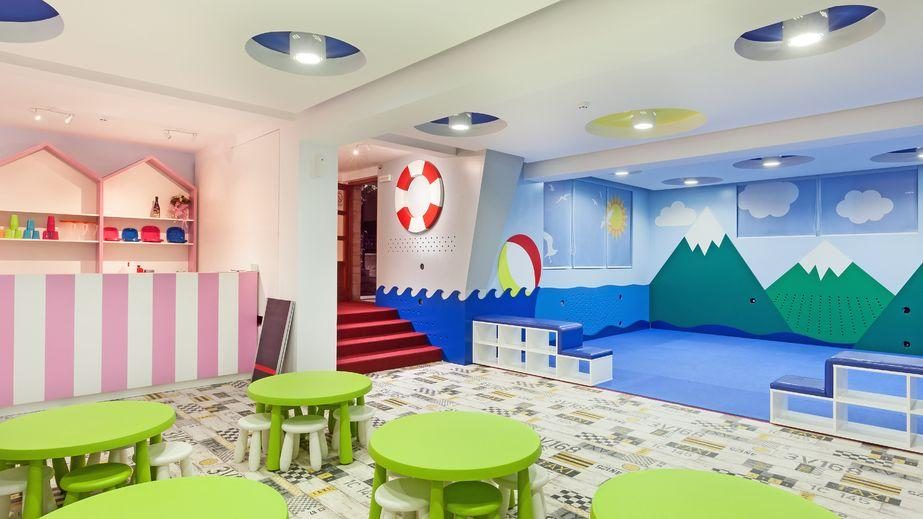
Starting a Kindergarten Business
by on 07/09/2025 103339

Read our updated article for Starting a Taska/Daycare in Malaysia here.
Malaysia’s Education Act 1996 (Act 550) defines a kindergarten (tadika) as any place where preschool education is provided to 10 or more pupils from the ages of 4 to 6 years. The Education Act clearly states that kindergartens cannot operate unless they are registered under the act, i.e., registered with the Ministry of Education (MoE). However, the reality is that many private kindergartens in the country have yet to register – with rough estimates purportedly running into the thousands.
Reasons for not registering may include a reluctance to navigate the many layers in the application process. Also, instructions on what to do and what forms to use are not all available or easily searched on the portals of the various State Education Departments (Jabatan Pendidikan Negeri, in short, JPN) and District Education Offices (Pejabat Pendidikan Daerah, in short, PPD) — the two MoE agencies that process applications to register a private kindergarten.
Opportunities abound for ECCE providers in Malaysia
Preschool education in Malaysia has seen rapid expansion during the past decade, especially where kindergartens are concerned. According to the Malaysia Education Blueprint 2013-2025, preschool enrollment of children aged 4+ to 5+ had an impressive growth from 67% in 2009 to 77% in 2011, while recently released Ministry of Education (MoE) figures showed enrollment at 81.7% in 2013 and 84.6% in 2015. The government is now targeting for 90% by this year and universal (100%) enrollment by 2020.
The good news is opportunities abound for early childhood education providers as the Blueprint forecasts that 70% of new preschools will be privately run, and 50% of all preschool seats will be in the private sector. In terms of numbers, it estimates that a whopping 900,000 students will be enrolled in preschools across the country by 2020!
Setting up a private kindergarten
To provide potential kindergarten owners with a preliminary picture of how the application process looks like, Kiddy123 has outlined below the basic requirements and procedures in registering a private kindergarten. As for the related forms mentioned, you can download some of them from the portals of JPNs such as Jabatan Pendidikan Wilayah Persekutuan Kuala Lumpur or Jabatan Pendidikan Selangor (click at “Muat Turun” and check under Unit Pendidikan Swasta). However, the downloads come in a batch of related and unrelated forms, some with almost the same headings, so it is best that you make an appointment with the nearest JPN or PPD or e-mail them to get the right forms.
To obtain the related forms for setting up a kindergarten, kindly contact your nearest JPN (here) or PPD (here).
Let us first take a look at some of the basic requirements for setting up a private kindergarten in Malaysia.

Business registration
Your business or company must be registered under the Business Registration Act 1956 or Companies Act 1965. Unlike other private educational institutions, kindergartens (also tuition centres and enrichment centres) can be sole proprietorships or partnerships. The minimum paid-up capital for a kindergarten is RM10,000.
You will also have to propose 3 suitable names for your kindergarten to the JPN/PPD. The guidelines are: the name of the kindergarten must start with “Tadika”, must be related to education or have a positive connotation, and should be in Bahasa Malaysia (special approval will be required for names in other languages). The name cannot contain the name of a State, town, district, political party, foreign leader, or prominent individualstillliving, while abbreviations are discouraged. After one of the names have been accepted by JPN/PPD, you will then have to go to the Companies Commission of Malaysia (CCM) to do a name search and booking.
Location and premises
Thought has to be given to the location and premises of your kindergarten. The Town and Country Department states that the location must be suitable and safe, i.e. not swampy, hilly or steep areas; areas at risk of erosion, landslides or floods; and areas close to high tension wires and industries.
If the kindergarten is located in a commercial building, it has to be on the ground floor or first floor. In flats, condominiums, or service apartments, the kindergarten has to be on the ground floor (if the ground floor is a car park, then on the first floor). Kindergartens in these buildings have to allocate space for an indoor playground.
The Town and Country Planning Act 1976 (Act 172) does not allow kindergartens to be located in residential lots, however, local authorities have given their approval on condition the kindergarten obtains letters of consent from the current owners of neighbouring houses within a 20-metre radius. If the kindergarten is located in a cul-de-sac (dead-end road), letters of consent have to be obtained from neighbouring houses within a 200-metre range. For terrace houses, only corner lots are allowed. However, an intermediate lot next to a corner lot is allowed when both lots are occupied by the same kindergarten. Premises must have an exit staircase or emergency door.
There has been some discussion on whether a kindergarten (tadika) and a child care centre (taska), i.e. a preschool for children below 4 years old, can be in the same premises (Note: Child care centres come under the Child Care Centre Act 1984 and the Department of Social Welfare is the agency for the issuance of its certificate of registration.) A circular from the Director General of Education dated 12 February 2014 states that a temporary certificate of registration (Perakuan Sementara Pendaftaran) can be issued based on the following conditions:
- The kindergarten and childcare centre must be clearly demarcated and separated by a dividing wall.
- The dividing wall must be approved by the local authority, Fire & Rescue Department, and Health Department. If the dividing wall is not approved within the period stipulated in the temporary certificate of registration, the registration of the kindergarten will be automatically revoked.
- The kindergarten and childcare centre must be registered under their respective acts.
If you do opt to go with a franchise programme, such as Eduwis Preschool Franchise, you will receive their expert guidance in terms of location selection. Eduwis preschools operate in both residential areas and corner lots. As a franchisor, Eduwis provides consultation in strategic and suitable premise selection. This is key as the location and functionality of the space in the premise are some of the most important factors in setting up a successful kindergarten.
Board of Governors
A kindergarten also has a Board of Governors (BoG), with a minimum of three persons. The BoG Chairman must be a Malaysian, while the kindergarten principal/headmaster acts as Secretary to the BoG. The principal/headmaster cannot be appointed as a member of the BoG.
Curriculum
Where the curriculum is concerned, the kindergarten must use the National Preschool Standard Curriculum or Kurikulum Standard Prasekolah Kebangsaan (KSPK). Under the KSPK, pupils aged 5+ must have at least 4 hours per day, while pupils aged 4+ must have at least 3 ½ hours per day, of teaching and learning (including meal breaks), 5 days a week.
Under the KSPK, the minimum time allocated to languages is as follows:
Language
Minimum time (in minutes) allocated per week for a preschool class whose medium of instruction is:
If a preschool class has 5 or more Muslim pupils, these pupils have to be provided with at least 2 hours per week of Islamic Education by a teacher that has been approved by the local authority. If the kindergarten has 5 or more pupils who are non-Muslims, these pupils have to be provided with at least 2 hours per week of Moral Education.
On the other hand, franchising is a great option too. You may select a franchise programme (as an additional programme) that is aligned with the KSPK curriculum, such as Eduwis Preschool Franchise.
Fees
Registration fees, term fees, payments for meals and kindergarten uniforms, and other fees charged will require approval from JPN/PPD. Fees paid must commensurate with the facilities and services provided and applications must be made for any fee increase. Fee increase is only allowed once in 3 years and must not be more than 30%.
Principal and teachers
Your principal and teachers must be Malaysians. The principal and teachers must at least have a Diploma in Early Childhood Education or its equivalent, while the principal must also have at least 3 years teaching experience in a private educational institution/kindergarten or is a retired teacher or ex-teacher.
Registering a private kindergarten
Before a private kindergarten can receive its certificate of registration from the MoE, there are three major stages (which may overlap) where applications have to be submitted to the government departments involved:
A) Application to JPN/PPD to establish a private kindergarten
B) Application to the local authority, Fire & Rescue Department and Health Department for approval of the location and premises
C) Application to JPN/PPD to register the kindergarten

A)Application to establish a private kindergarten
The application for the establishment (penubuhan) of a kindergarten is the initial stage where the JPN/PPD checks your proposed set-up – i.e., your education programmes, financial standing, management, manpower, and facilities. The application is made using Borang BPS1 and Borang 5F and is submitted to either:
- the Private Education Unit (Unit Pendidikan Swasta) of the JPN in the State where the kindergarten is to be located, or
- the PPD that oversees the district where the kindergarten is to be located.
If you are thinking which option is faster, it usually depends on how busy the officer processing such applications is – there is usually only one officer doing this at the JPNs and PPDs. For example, if you are in districts such as Petaling Utama and Petaling Perdana in Selangor, where relatively more applications are received by the PPDs, you may wish to submit your application to JPN Selangor. Once your kindergarten has been approved and your certificate of registration received, you can still make a request for your file to be transferred to the PPD concerned if you wish.
When submitting Borang BPS1 and Borang 5F, besides the details pertaining to your business, Board members, principal and teachers, you will also need to submit:
- Three proposed names according to the guidelines provided
- A location plan of your kindergarten showing the major highways/roads leading to it from the surrounding townships
- A floor plan of your premises with the room measurements
- A copy of the tenancy agreement or offer letter of intent to rent the premises
- Letters of consent from owners of the neighbouring houses, if in a housing area
- A draft of the instrument of governance (you can ask JPN/PPD for a sample to follow)
- A working paper, which includes all the above details plus detailed photographs (you can ask JPN/PPD for a sample to follow)
For the location plan and floor plan, check how many copies the officer requires. The JPN in Kuala Lumpur needs 8 copies, while others need only sufficient copies for themselves, the local authority, Fire & Rescue Department, and Health Department. Note that your working paper is supposed to look impressive. JPN Pulau Pinang even provided a sample on their portal of how the cover page should look.
If all the documents are in order and your application is accepted, the officer is supposed to make a site visit to your proposed kindergarten (although not all do so).
B)Application for approval of the location and premises
After your application is received by the JPN/PPD, they will provide you with letters addressed to the Local Authority, Fire & Rescue Department, and Health Department requesting them to look into the other aspects of your kindergarten under their jurisdiction. You will also have to do a name search and booking at CCM for the kindergarten name that has been accepted by JPN/PPD. It would speed up things if you deliver these letters directly to the 3 departments. Note that it is your responsibility to obtain their endorsement of your kindergarten. Their approval letters are required by the JPN/PPD before your kindergarten can be registered.
C)Application to register a kindergarten
Once the JPN/PPD is satisfied with the information and documents you have provided in (A) and with your location and premises, JPN/PPD will provide you with Borang B Kaedah 5 (T) and its attachments to apply for the registration of the kindergarten, while awaiting the approval letters from the local authority, Fire & Rescue Department, and Health Department.
You will have to submit Borang B Kaedah 5 (T) together with a receipt for RM7.00 (payment for processing fee and certificate of registration) and the following:
- A copy of the approval letter from the Local Authority
- 1 original copy of the finalised instrument of governance
- Maklumat Pengurusan (T) form with the details of your BoG members
- Borang C (Permit Pengelola / Pekerja), which is an application by a BoG member to be registered. Each form must be clipped together with a receipt for the RM7.00 payment for the processing fee and permit
- Borang PT-(1)-(M), which is an application by your teachers for a teaching permit. Payment is also RM7.00.
- Location plan and floor plan
- Latest photos of the kindergarten premises, i.e. the signage, frontage, outside views, inside views
- A copy of the kindergarten’s latest bank statement
- A copy of the approval letter from the Health Department
- A copy of the approval letter from the Fire & Rescue Department
Conclusion
As can be seen from all the above, the setting up of a kindergarten is not an easy task. One needs knowledge of the business, a safe location, the right premises, and suitable and qualified people as board members, principals, teachers, and workers to provide the best environment for the pupils to be taught, to learn, to cultivate positive attitudes, to develop their character, and to grow strong and healthy. The many layers in the approval process are tedious and time-consuming but the regulations definitely help to ensure the well-being and safety of our little ones.
We very much welcome kindergarten owners who have gone through the registration process to share their experiences here. We have presented a general picture as a preliminary guide to new-comers. If you have any advice to give on the other details and processes, please do share with us here.
Disclaimer:
While every effort has been made to ensure that the information provided in this article is accurate, Kiddy123 Sdn Bhd shall not be liable for any special, incidental or consequential damages that may result from the usage of information obtained from this article.
•Application to JPN/PPD to establish a private kindergarten.




















